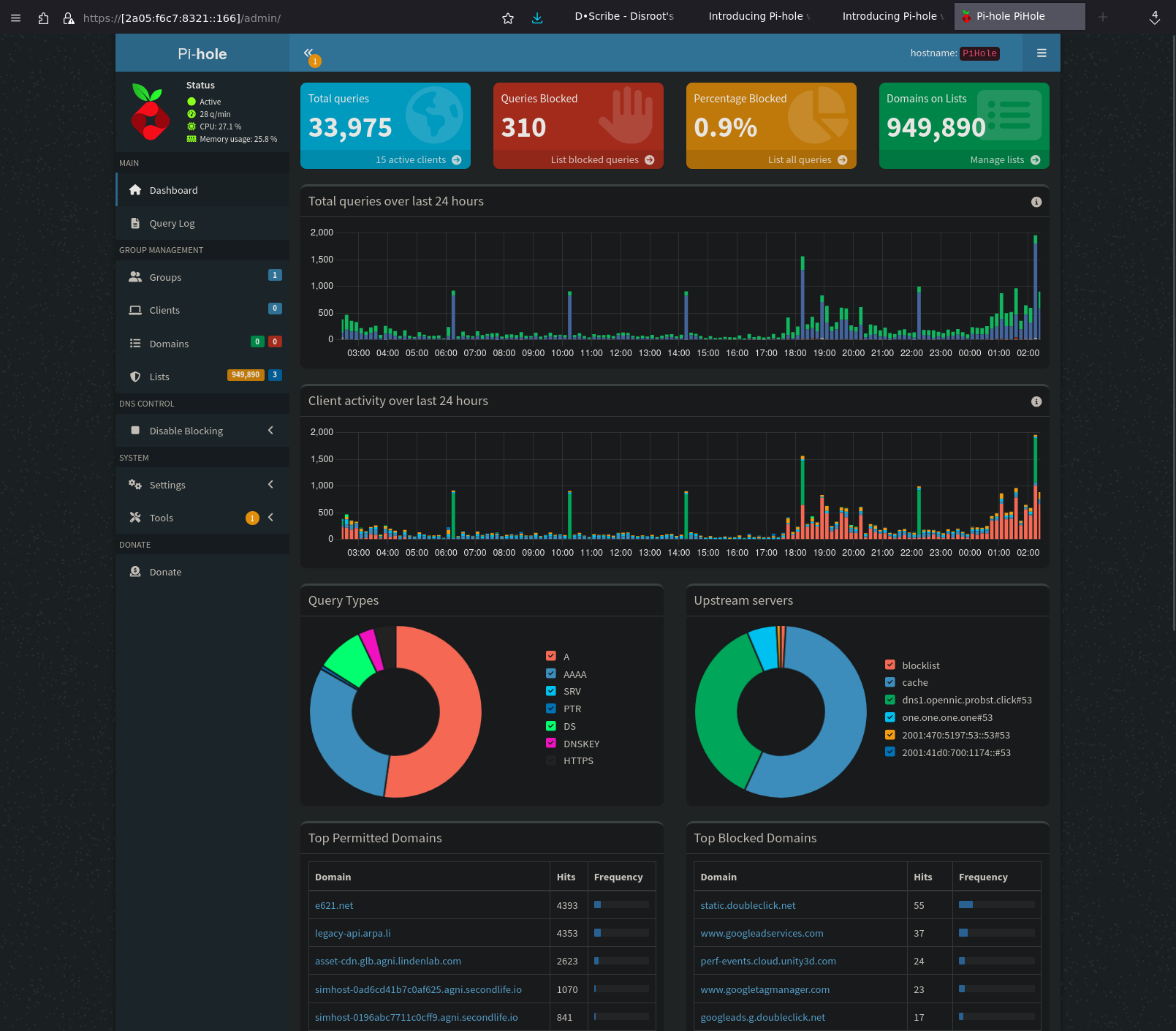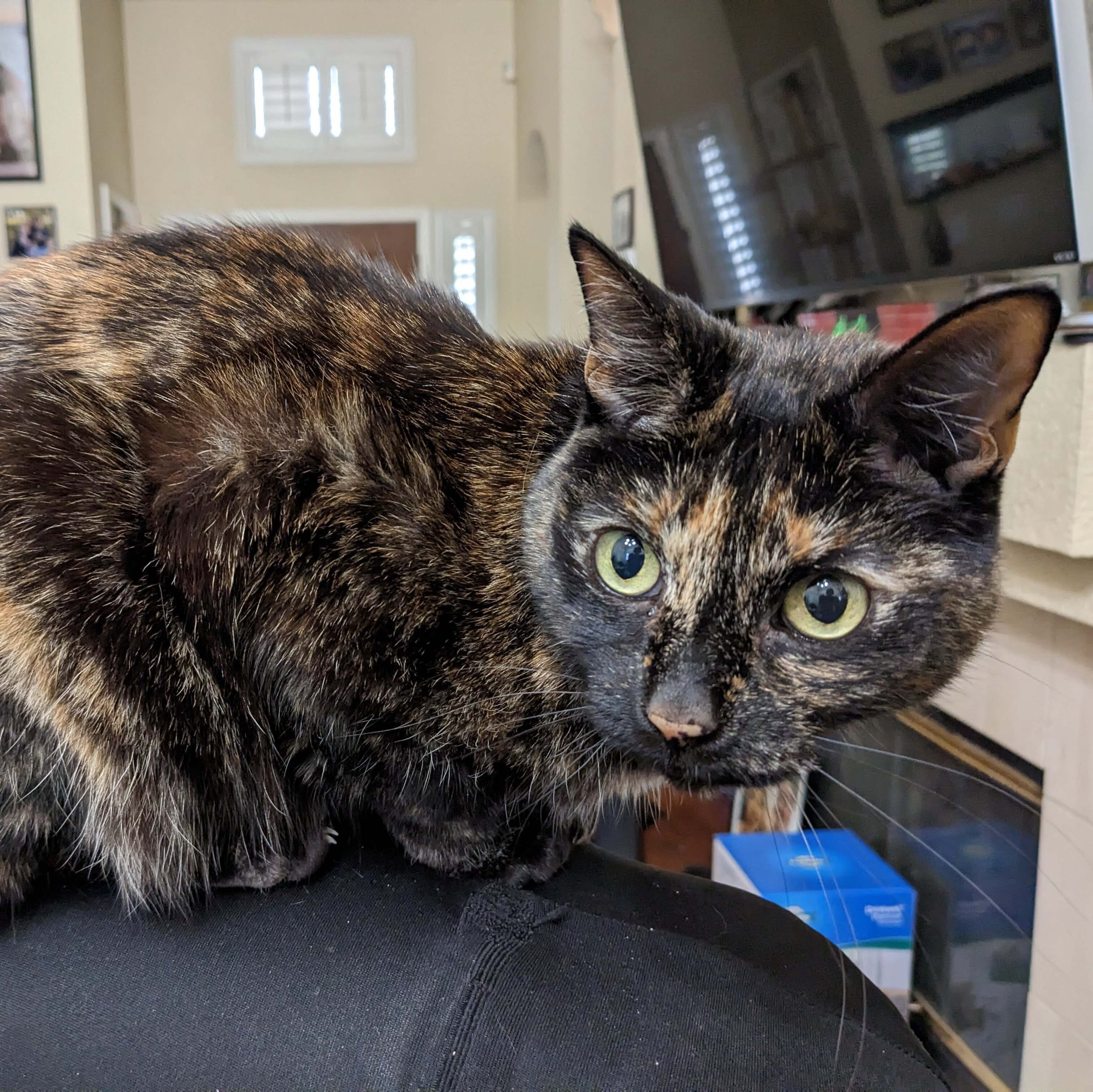- cross-posted to:
- selfhosted@lemmy.world
- cross-posted to:
- selfhosted@lemmy.world
Be careful upgrading Docker versions, it has breaking changes.
Whew, this is why I pin on
sha256. I fear for thelatestcrowd.Edit: At least it seems updating the container doesn’t break things:
Replacing any v5 image (2024.07.0 and earlier) with a v6 image will result in updated configuration files. These changes are irreversible.
Live on the edge
Pin to
developI don’t use pihole, but everything I use is pinned by major release version. No problem yet with surprise breakage.
Anyone got screenshots of the new UI?
https://u.drkt.eu/PZJz6H.png I don’t know how to embed an image link
It’s not fundamentally different
just for future reference (click the source button to see how I embedded your image)

Thanks, I haven’t used pi-hole in a while, but it looks the same for me.
Top premitted domain: e621.net
A fellow sysadmin furry I see
😏
Thanks for sharing! I need to get mine running again.
It doesn’t really look different at all
Has anyone tried https://github.com/hickory-dns/hickory-dns? It seems to be a complete DNS server instead of what looks like a bunch of bash config for a standard Linux tool. There are block lists you can configure as well, and it supports pretty much everything.
It’s way overkill, but hey, why not?
I probably would just stick with dnsmasq
Looks like a great release!
Neutrino emissions detected!
Good news! Hope they implement detailed query log and support for upstream DoH DNS next.
They’ve added a bit more info to the query log, when you click on individual items.
It’s still not a native feature, but; You can add DOH using cloudflared, incl configuring which upstream(s) to use (you don’t have to use cloudflare itself, just the tool).
There’s even a docker version.
How much is Pi-hole worth it assuming I’m using UBO and also have most non-ad based streaming services?
I’m thinking phones and less often used devices?
It’s extra protection, especially if you use non-browser apps on your devices it can limit tracking.
It’s really nice for random browsing/apps. Games, free tools, general web browsing; none of it loads ads.
Some mobile games will even attempt to load ads, fail, then give you the reward for ‘watching’ the ad.
It also stops devices from phoning home to upload telemetry and blocks known malware domains. (depends on the lists you use, heres a source for some lists)
I can tell you something: I’m using some free apps on my Android phone and never notice ads at home, but when I’m on the mobile network or on a different wifi (at work or some public place) I start seeing them.
This is one of the reasons why I set up a Wireguard VPN connection to my home network, and an on-demand VPN connection on my phone that automatically turns on anytime I’m not on the home network. Even away from home I get the benefits of my Pi-hole+Unbound (running as recursive resolver) setup.
This is my setup too. I use WG-Tunnel to manage the VPN connection on my phone. It just monitors whenever you disconnect from your trusted WiFi network and automatically enables the VPN.
Only hiccup I’ve found is wireless Android Auto isn’t a fan of a VPN.
I love my pihole. Even gets rid of the ads on my roku homescreen.
I layer up. Always pihole, and whatever I can run locally on a machine or browser.
I’m partial to AdGuardHome myself, but PiHole does the job well
I have both but just use pihole as a local DNS server/forwarder. I bump into too many random times where sites or redirects don’t work properly since they get blocked.
Update went fine on a bare metal install. Customising the webUI port is a little easier now, instead of editing lighttdp.conf I think you can do it in the UI.
I struggled to find some settings, I looked for ages for the API token. Found it in all settings: expert, scroll for half a mile down the webUI API section.
Also, struggled with adding CNAMES in bulk, I thought you could do that in the old UI. You might be able to in the new UI. I just 'one by one’d them.
Docker update went flawlessly.
I have an lxc and to go which is a task for another day, unless TTeck’s updater beats me to it.
I was running Pi-hole on an actual Raspberry Pi 4 that was apparently running Raspbian 10. My upgrade did not go smoothly. But I got it and I’m liking the new version. The only issue I see so far is that the admin panel in v5 used to have a “remember me for 7 days” checkbox when logging in, this version does not.
It seems PADD got borked. Permission thing is happening again.
I just found a ad-blocker build for the esp-32 so I’m gonna grab a 3-pack of the s3 model and some other electronics and play some games.
Why would someone pick PiHole over say a customized NextDNS on your router?
Little of column A little of column B.
I use pihole on the LAN, then upstream is cloudflared translating DNS to DOH using NextDNS as the primary and Quad9 as the fallback.
Looking at the last 24hrs; my whole LAN network has made 91k DNS requests, 14.5% of that being passed to the upstream (the rest is locally cached responses or blocked) so ~12.7k served by NextDNS. When/if that 300k limit is reached, cloudflared will just fallback to Quad9.
With this I get the blocking from NextDNS as well as whatever additional lists I want to use; plus pihole serves local only records for self-hosted services and fixed names for LAN devices (I find standard broadcasted hostnames unreliable at best).
Thank you. That’s incredibly insightful. When I get the cash I’ll setup a PiHole












